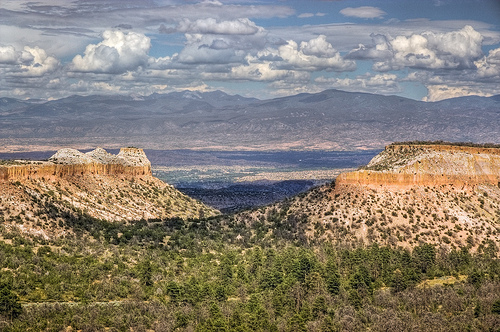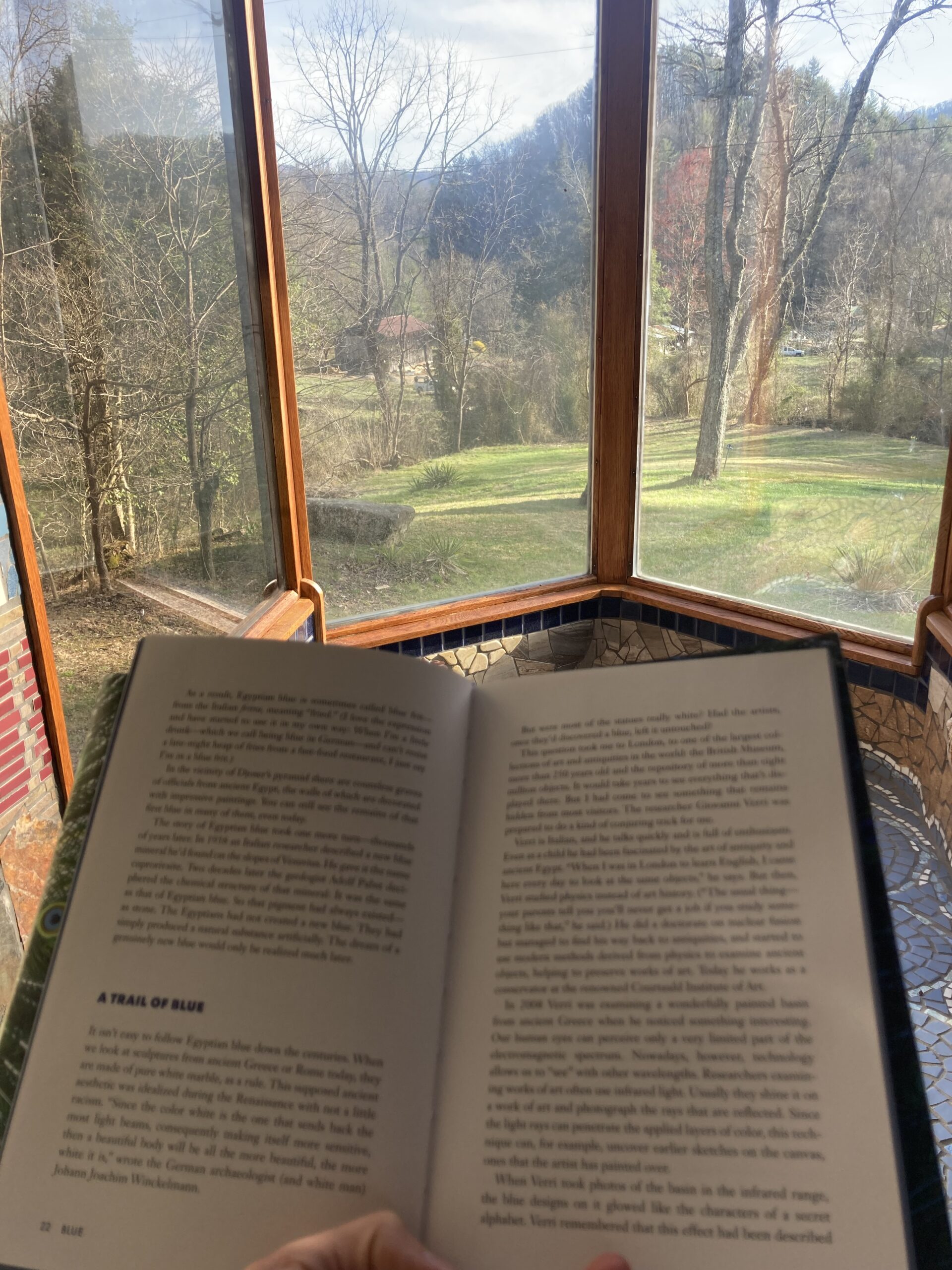By NINA PURO

Details Concerning the Individual Denizens and Their Residences
In New Mexico, days end with soaking the frijoles for tomorrow. They start with a lump of bacon grease sizzling in a cast-iron pan, with chipping a chunk of green chilé from one of the blocks in the freezer. People like food that hurts them as they eat it. Even the cocoa has chilé in it and a Spanish name and must be beaten to a froth.
People pass through, but rarely stay. There are no basements but so much underground, decaying—buried but waiting, still, to come out or for others to come in. There are paths and paths under the hills that do not end. There are roads looping above them, and each leads to the same bail bond office. There is a ghost, La Llorona, pulling kids into the arroyo if they play there after dark, as she did with her own children. Fruit trees wither; asparagus is mown. Goatheads, barrel cacti, four-wing saltbush flourish. The light is clear to sharpness, but the edges of the houses are soft and crumbling. The houses are stuccoed in variegated colors of dirt that are never precisely the same color as the dirt they stand on.
When it snows, the snow evaporates within hours, except the patches in the shade of juniper bushes, which stay for days. This is, in fact, the general principle of multitudinous phenomena in this place—most things disappear instantly, but the bits in the shadows linger. The people decorate their houses with bones; they paint their windowsills blue to stave off the evil eye. There are no daughters and too many sons weeping into cans of beer, then lining them up and shooting them. The women all have harmonicas strung under their chins, but only the wind plays them.
Facts Regarding Population Demographics and Traditional Celebrations
New Mexico’s state bird is the roadrunner, and like the cartoon roadrunner, the people are constantly chased but inevitably escape, mostly through sheer luck. Española, a 400-year-old town in Northern New Mexico, is 85% Latino but also has the largest Sikh Khalsa population in the world outside of India, many of whom are ethnically Caucasian–a leftover of the influx of hippies in the late sixties. Men with turbans and swords dangling from their sides saunter under the wreaths of chilé dangling from portales. At the same time, more people die, per capita, in Rio Arriba County with needles in their arm than anywhere else in the country. Among many families, grandparents shoot up with their grandkids in a time-honored tradition.
In Santa Fe, they celebrate the day when the colonizing Spaniards cut the right feet off of all the Pueblo Indians after a rebellion. Later, someone came along and did this to all the statues of conquistadors on horseback at various rest stops on New Mexico highways. Many New Mexican Catholics light candles on Friday and sing strange guttural songs they don’t know the meaning of, as they have for hundreds of years. As it turns out, 20% of Latino men tested carry a genetic marker only Sephardic Jews have—they are conversos, “converted” and driven out of Spain in the 1600s.
Up the hill in Los Alamos, they celebrate building the atomic bombs. The bombs’ names were Little Boy and Fat Man. The government will not name the projects that the lab, which employs a majority of the town, is still engaged in, nor will they comment on the amount or nature of material that may or may not be buried in the soft soil near the reservoir, emitting inarguably high levels of radiation from the far-away distances civilians with Geiger counters can access.
A Note Concerning the Seasons and Best Times To Visit
Late summer brings late-afternoon thunderstorms and lightning splinters up from the ground. October is the season of green chile roastingin giant drums, turned in the Albertsons parking lot by men in ponytails and jean jackets named Miguel or Eduardo; season of bread in the hornos to sell by the roadside; bonfires collapsing on household pets and the press of frost and cider; season of saving paychecks for Christmas and heat. Heat consists of propane or the roadside pickups of wood cut illegally up in Chama, hand-cured dry and delivered to the side of the house with a crash. October is Fiesta, and at the end of Fiesta the people burn Zozobra, a ten-story effigy of the sins accumulated in the past year. Mariachis play and fancydancers dance underneath him while the town gathers and drinks, waiting. While Zozobra burns, he groans pre-recorded groans and his arms wave slowly, his plaster eyes sparking, a corona of fireworks around his head. There are Zozobra cakes; Zozobra piñatas; mini-Zozobras tied to chain-link fences and set alight at every elementary school. The rest of the year, the Zozobra mariachi bands play real songs for weddings and quinceañeras; play Cielito Lindo for the tourists on patios. The tourists smile politely as they cautiously dip the edges of their just-fried chips vertically in the salsa the locals think is mild as ketchup.
Warm summer nights are when cars full of drunk teenagers smack languidly into each other going in the wrong direction on the highway, past white memorial crosses scattered at each curve for the ones the years before. Snowy winter nights are when batteries go and tires pop. Christmas brings loud Texan skiers and French tourists to gawk at the farolitos, candles in paper bags that line up like runway lights, guttering on the edges of each roof and stuccoed dividing wall. Spring is when cars are abandoned in the arroyo and set on fire. March is fine grit blowing into everyone’s face, blowing into the corners of rooms and eyes and mouths, is dust devils and bolls of cottonwood and puffs of yellow pollen blowing into the trees and the river sluicing high and brown into the acequias. Nobody wants to live in March.
Nina Puro’s work has appeared or is forthcoming in Cream City Review, Third Coast, Pleiades, Harpur Palate, and other publications.




